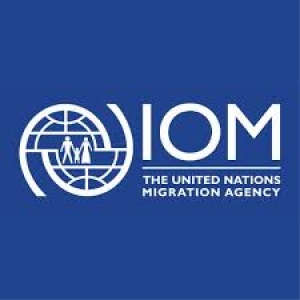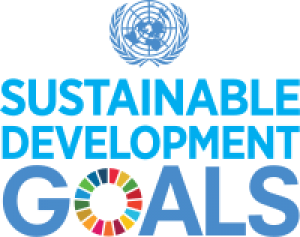Migration policies and governance
The growing interest in comparative analyses of migration has led to a variety of attempts to assess and compare countries’ migration policies and governance, including immigration, emigration and integration. This effort is also enshrined in the Sustainable Development Goals (SDGs). In SDG target 10.7., United Nations (UN) Member States commit to facilitate by 2030 the “orderly, safe, and responsible migration and mobility of people, including through implementation of planned and well-managed migration policies” (UN, 2015).
Data that assess migration policies are commonly based on experts’ evaluations of existing laws and regulations and provide insight into aspects of countries’ governance. However, these data are limited because individual data sources, mostly migration policy indices, do not cover all policy aspects where migration is implicated. Data on migration governance also mostly focus on certain regions or time periods. Although this page focuses on data that assess migration policies, it is important to note that data that inform policy making on migration are also limited.
Back to top
Definition
Different definitions of governance exist. One definition of governance pertaining specifically to migration is:
“The combined frameworks of legal norms, laws and regulations, policies and traditions as well as organizational structures (sub-national, national, regional and international) and the relevant processes that shape and regulate States’ approaches with regard to migration in all its forms, addressing rights and responsibilities and promoting international cooperation.” (IOM Glossary on Migration, 2019).
Migration policy is part of migration governance, and widely used without being clearly defined. Other related terms include migration regulation, restriction and control. A recent definition describes migration policies as:
“… a government’s statements of what it intends to do or not do (including laws, regulations, decisions or orders) in regards to the selection, admission, settlement and deportation of foreign citizens residing in the country” (Bjerre et al ., 2015).
Migration policies may cover various areas including the labour market, integration, and humanitarian/asylum, family, co-ethnic, and irregular migration. IOM’s Migration Governance Framework (MiGOF) defines migration policy as the “law and policy affecting the movement of people” and includes policy on “travel and temporary mobility, immigration, emigration, nationality, labour markets, economic and social development, industry, commerce, social cohesion, social services, health, education, law enforcement, foreign policy, trade and humanitarian” issues (IOM, 2017).
Key trends
Data sources & measurement
Several migration policy indices exist and more are under development (Bjerre et al al., 2015, IOM, 2019: 7-14). Available data vary considerably according to the specific aspect of migration that is measured, the number of countries that are included, and the number of years covered. The data sources that are most comprehensive because they cover more countries and dimensions of migration policies include:
The World Population Policies Database (UN DESA) provides information on the views and policy priorities of 197 countries. It covers 29 indicators across various population policy areas, including immigration and emigration, age structure, fertility, health and mortality, spatial distribution and internal migration. The database is updated biennially, with the last update having been made in 2015 . In 2013, UN DESA released an International Migration Policies Report that was based on data in the World Population Policies Database as well as the Global Migration Database. The report provides information on levels and trends in international migration, and on policies to influence the level of immigration, promote the immigration of highly skilled workers, and foster the integration and naturalization of immigrants into the host communities. Data also include information on policies designed by Governments in countries of origin, such as policies on emigration, acceptance of dual citizenship, policies to encourage the return of citizens, and measures to promote involvement of diaspora in countries of origin. The response rate by countries can ranges depending on the year and survey question.
The UN Inquiry among Governments on Population and Development contains a migration module that is jointly administered by UN DESA and IOM with the support of OECD, to collect country-level data on SDG indicator 10.7.2 (Number of countries with migration policies to facilitate orderly, safe, regular and responsible migration and mobility of people). It is based on IOM´s MiGOF as well as some insights from the MGI so it is comparable to the MGI but goes less into depth as it only includes scores, whereas the MGI include the text justifying the rationale behind the scores.
Determinants of International Migration (DEMIG) POLICY tracks more than 6,500 migration policy changes enacted by 45 countries from 1945 to 2013, thus also including countries from outside Western Europe and Northern America. DEMIG accesses policies using 51 indicators and codes them according to the policy area and migrant group targeted, as well as the change in restrictiveness they introduce in the existing legal system.
The Migration Governance Indicators (MGI) form a framework to assess the comprehensiveness of countries’ migration policies and to help identify gaps and priorities to build institutional capacity and programmes on migration. The MGI covers 84 countries and 90 indicators, and is based on the six dimensions of good migration governance in IOM’s Migration Governance Framework (MiGOF), the first and so far only internationally agreed definition for “well-managed migration policies”. These six policy dimensions are: migrants’ rights, institutional capacity, regional and international cooperation, socioeconomic well-being of migrants, mobility dimensions of crises, and safe and orderly migration. The framework is being applied in a growing number of volunteering countries. One of the aims of the MGI is to help countries develop baseline assessments and conduct future reviews of their work in the context of the SDGs and the Global Compact on Migration.
The Immigration Policies in Comparison (IMPIC) project developed a set of 69 sophisticated quantitative indicators to measure immigration policies in all (33) OECD countries for the period 1980 to 2010. Policy areas include labour migration, asylum claims and refugees, family reunification, and the migration of those with a shared colonial history, language, religion and/or ancestry, (also known as “co-ethnic migration”). Various sub-dimensions in each policy category are taken into account, including eligibility, conditions, security of status and associated rights.
The IMPALA project compiles comparable data on immigration law and policy in over 25 countries of immigration between 1960 and 2010. Data cover all major categories of immigration law and policy, such as the acquisition of citizenship, economic migration, family reunification, permanent immigration, temporary migration, asylum and refugee protection, and policies relating to undocumented migration and border control.
With a much more confined geographical focus, Cerna´s Index measures policy openness and restrictiveness targeting highly skilled immigrants for 20 countries in 2007 and 2012. Ortega and Peri´s Index studies the effects of policy restrictions on immigration flows for 14 countries between 1980 and 2005. Both these indices can thus be compared to the DEMIG project approach that focused on restrictions as well, but Cerna´s and Ortega and Peri´s approaches are much smaller in scope both thematically and geographically.
OECD’s Policy and Institutional Coherence for Migration and Development (PICMD) dashboard measures the extent to which public policies and institutional arrangements are coherent with international best practices to minimize the risks and maximize the development gains of migration. The dashboard of indicators are grouped into five policy dimensions: institutional coherence, reducing the cost of migration, protecting the rights of migrants and families, promoting integration and reintegration, and enhancing the development impact of migration. The pilot project includes 10 countries with plans to expand to 20-25 countries.
A related index, the Migration Integration Policy Index (MIPEX), also measures migration governance but focuses on integration policies instead of migration policies in 38 receiving countries. Some of its variables have been taken up in the MGI, and the overall MIPEX can be used as a complimentary data set to understand migration governance of a specific subfield that the MIPEX uniquely and extensively covers.
The CITLAW database measures the degree of inclusion and freedom of choice for non-nationals in acquiring citizenship, while the ELECLAW database measures the degree of inclusion of the electoral voring rights and uniquely covering the right to stand for candidacy for non-resident citizens (emigrants) and resident non-citizens (immigrants). Both the CITLAW and the ELECLAW data sets are comparable to some of the indicators in the MGI and can serve to cross-check information. The EMIX database studies "emigrant policies" of Latin American and Caribbean origin countries, including ties with their diaspora population and thus provides another piece in the migration governance puzzle across regions and topics.
Data strengths & limitations
More data on migration policies have become available in the last decade, mostly through research institutions and international organizations. Migration policy indices cover a wide range of relevant fields, different time periods and countries. However, certain limitations exist:
- Migration policy indices are not available for many countries, especially low income and origin countries;
- Different indices also use varying definitions of migration policies and apply different methods, such as different scales, aggregations, coding and cover different years;
- Most indices are based on experts’ evaluation of legal provisions in a specific country;
- Many indices cannot be replicated easily and are not publicly available; and
- Migration policy indices generally do not measure the implementation of policies or their respective outcomes. For example, an immigration policy index may describe the laws governing irregular migration to a specific country; however, it does not tell you whether the policy is enforced or how many irregular migrants are entering or residing in the country.












